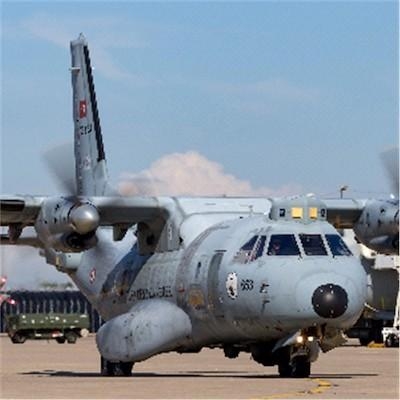ISR, Aerial Refueling Missions Drive The Market
The Special Mission aircraft were in limelight during the Cold War era, and the market gained further infamous attention due to the shooting incidents of U-2 reconnaissance aircraft in Russia and Cuba. This prompted the U.S. to temporarily ground the U-2 fleet for rework of its design. The risk involved to personnel in any operation in a hostile environment is very high, Operation Deny Flight is another example of the risk involved in special missions. The high stakes of cost and personnel have prompted the Special mission aircraft market to skew towards more efficient platforms like the unmanned vehicles.

The penetration of unmanned platforms in the Special mission aircraft market has been limited to specific roles. The use of unmanned platforms for reconnaissance roles is high. The U.S. Navy has awarded a project to Boeing to demonstrate the possibility of unmanned aerial refuellers for carrier-based aircraft. The final contract is estimated at around $13 Billion for around 70+ platforms. This is one of the significant attempts by any country to assign refueling roles to an unmanned platform. The success of this program could have a long term impact in the tankers and the aerial refuellers segment of the special mission aircraft.
The Aerial Refuellers or Tankers are expected to account for more than one third of the special mission aircraft market. The KC-135 is expected to account for around 50%- 60% of the total tanker fleet, the next dominant aircraft is the KC- 130, this is expected to account for around 10%-15% of this segment. Most of the modern tankers are based on Jet Engine platforms from Airbus and Boeing.
The other dominant segments of the Special Mission Aircraft market are the AEW (Airborne Early Warning), MPA (Maritime Patrol Aircraft) and EW (Electronic Warfare) segments. The expansion in the naval warfare capabilities, including both sub surface and undersea capability have acted as a key driver to the MPA market. The key payload which can be carried by the MPA are Radar, for detection of surface ships and submarines. The Magnetic Anomaly Detection (MAD), these are used to detect the iron from the submarine hull.
The US and Russia investing in the Special Mission Aircraft segment, US accounts to the largest fleet and the country with the largest backlog of Special Mission Aircraft market. The US Special Mission fleet order backlog accounts to more than 60% of the Global Special Mission aircraft order backlogs. The Russian heavy lift cargo aircraft have a significant presence in this market.
The scope of the report titled “Global Special Mission Aircraft Market and Technology Forecast to 2028” does exclude the market sizing of the unmanned platform which are used for Special Mission purposes. The total market is estimated at around $20.5 billion in 2020, and is expected to grow to $30.7 billion in 2028 at a Compound Annual Growth Rate (CAGR) of around 4.6%.
The key technology developments in the Special Mission Aircraft market revolve around maintaining the fleet readiness, unmanned systems, detection, data gathering and analysis.
This report titled “Global Special Mission Aircraft Market and Technology Forecast to 2028” is segmented based on Role, Region, Engine and Fitment. The role-based segmentation is on Tankers, Reconnaissance, AEW, SAR, ELINT/ SIGINT, EW, Communication, MPA and Others. The regional segmentation covers North America, Europe, APAC, Middle East and Rest of the World. The engine type is segmented as Jet Engine and Turboprop and the fitment is segmented as New Orders and Upgrades.
(Image provided with ASDReports news release)
 ANN's Daily Aero-Term (04.24.24): Runway Lead-in Light System
ANN's Daily Aero-Term (04.24.24): Runway Lead-in Light System ANN's Daily Aero-Linx (04.24.24)
ANN's Daily Aero-Linx (04.24.24) Aero-FAQ: Dave Juwel's Aviation Marketing Stories -- ITBOA BNITBOB
Aero-FAQ: Dave Juwel's Aviation Marketing Stories -- ITBOA BNITBOB Classic Aero-TV: Best Seat in The House -- 'Inside' The AeroShell Aerobatic Team
Classic Aero-TV: Best Seat in The House -- 'Inside' The AeroShell Aerobatic Team Airborne Affordable Flyers 04.18.24: CarbonCub UL, Fisher, Affordable Flyer Expo
Airborne Affordable Flyers 04.18.24: CarbonCub UL, Fisher, Affordable Flyer Expo



